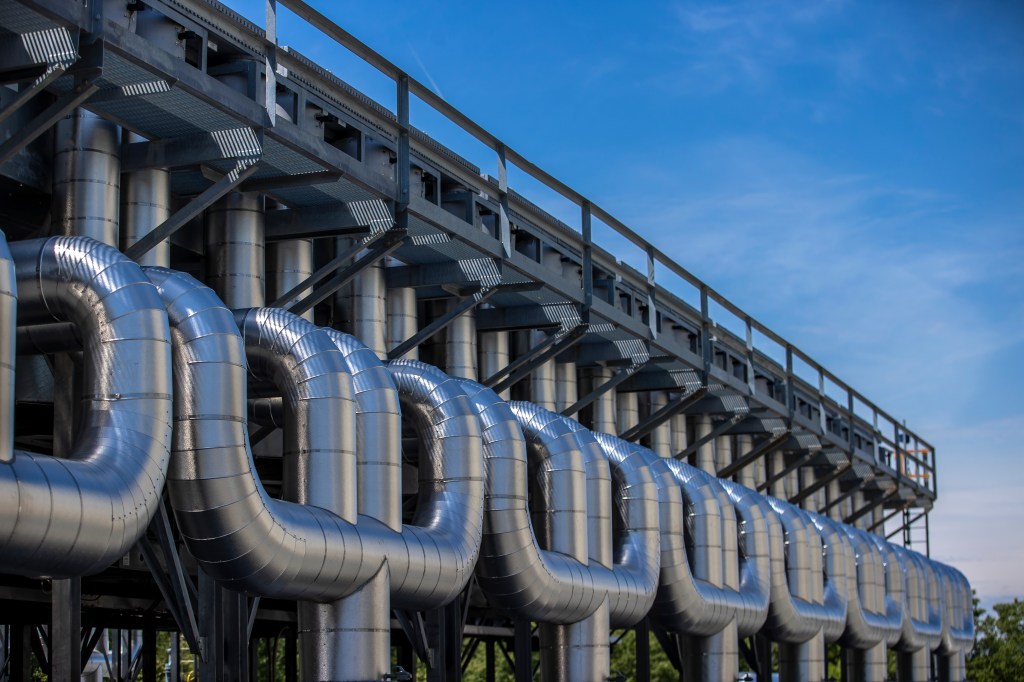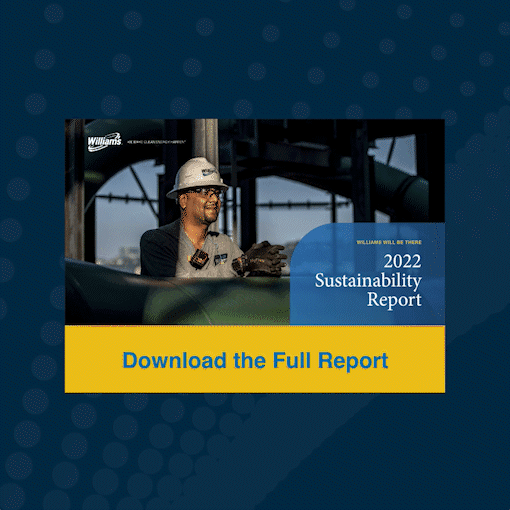Williams closely monitors the air emissions associated with our operations to meet increasing energy demand while mitigating potential air emissions impacts on people and the environment. Our actions to address operational GHG emissions overlap with how we minimize our non-GHG air emissions. Air emissions from our facilities include, but are not limited to, nitrogen oxides (NOX), volatile organic compounds (VOCs), hazardous air pollutants (HAPs), carbon monoxide (CO), sulfur oxides (SOX) and particulate matter (PM).
Increased criteria pollutant emissions in 2022 are due to increased fuel combustion by our compressor drivers that transport growing volumes of natural gas to our transmission segment customers. Criteria pollutant emissions are anticipated to decrease with continued investment in our Emissions Reduction Program for equivalent volumes of gas, pressure and transport distance. We also follow a standardized approach for asset construction, operation and maintenance to minimize air emissions.
Williams tracks and collates air quality-related data across our enterprise through a robust GHG and criteria air pollutant dashboard, and we utilize PowerBI and Maximo to monitor progress. We calculate and report annual emissions data from our facilities to the applicable regulatory agencies following permit requirements. In addition, the Williams Environmental Assessment Program, a set of protocols and tools we use to evaluate environmental compliance at our operations and throughout the lifecycle of construction projects, establishes a process for conducting internal audits of air emissions compliance. We also provide air quality permit training for employees who maintain our facilities and support capital projects.
Tracking air emissions from our operations allows us to evaluate our performance and identify opportunities for improvement. Our methods for mitigating air emissions include retiring and replacing legacy equipment, maximizing operational efficiency, following operational and maintenance best practices and controls, implementing new technologies and monitoring compliance with local, state, regional and federal laws and regulations. For example, in 2022, all applicable Williams turbines complied with new formaldehyde emissions limits that went into effect in March 2022.

Williams works to reduce air emissions through modernization programs focused on retiring and replacing legacy equipment. Our Emissions Reduction Program (ERP) is a multi-year investment project that aims to considerably reduce NOX and methane emissions from Transco and Northwest Pipeline (NWP) compressor stations. The ERP replaces legacy compression equipment with a combination of modern, NOX-limiting natural gas-fired turbines and electric motor drive (EMD) compressors equipped with vent gas reduction systems, also resulting in an anticipated reduction in equipment downtime and improving reliability for customers. The projects incorporate gas recovery technology to reduce vented methane, and the turbine compressors transport natural gas using combustion technologies that are lower emitting than required by current air quality regulations. We project that the ERP will reduce Transco and NWP system-wide transmission sector NOX emissions by over 75% and compressor methane emissions by approximately 50% from recent levels.
In 2022, under the NWP ERP we installed one low NOX gas-fired turbine to replace four legacy reciprocating engines at our Rangely Compressor Station and made low NOX emissions upgrades to two existing turbine engines at our Boise Compressor Station. As a result, we expect to see significant reductions of averaged annual emissions by approximately 740 tons of NOX per year for the full calendar year beginning in 2023. Under the Transco ERP, Station 180 will go into service in 2023. Stations 80, 100, 150 and 160 ERPs will go into service in 2024, with significant permitted emissions reductions. For 2023 Station 180 ERP, Transco will retire and replace 14 legacy natural gas combustion reciprocating compressor engines with two new natural gas combustion turbine compressors, which are expected to result in a reduction of permitted emissions by approximately 2,600 tons of NOX, 1,200 tons of carbon monoxide, 240 tons of volatile organic compounds and 60 tons of formaldehyde per year, along with an estimated reduction in compressor methane potential to emit of 2,000 tons per year.
In addition, Williams updated our process for evaluating alternatives for compressor horsepower expansion and replacement projects within the Transco system. This process update enhances the decision-making matrices that govern the installation of EMD compression over natural-gas fired compression for the purposes of mitigating GHG and criteria pollutant emissions at compressor stations through the analysis of local grid resource mix, reliability and security, better positioning the company to reduce our Scope 1 and 2 GHG emissions. For more information on reducing GHG emissions, see Operational Greenhouse Gas Emissions.


